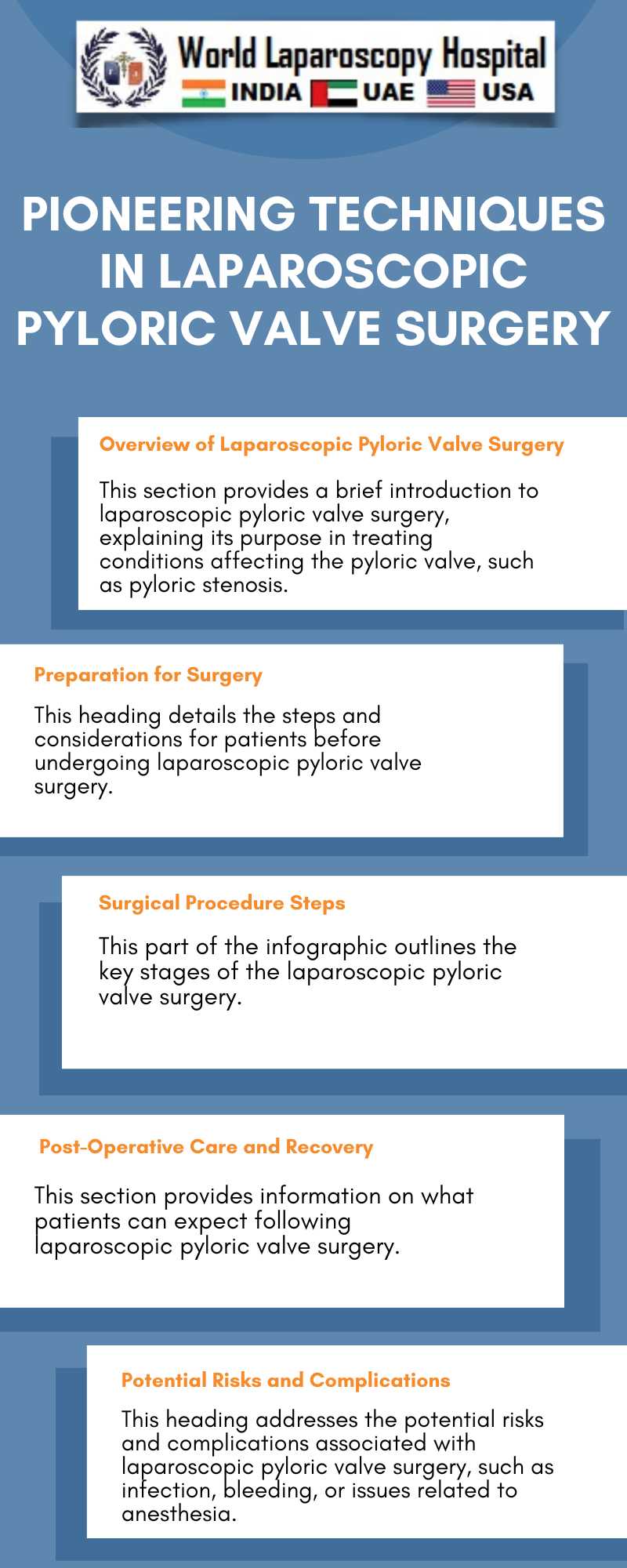Pioneering Techniques in Laparoscopic Pyloric Valve Surgery
Pioneering Techniques in Laparoscopic Pyloric Valve Surgery
Introduction
Laparoscopic pyloric valve surgery, a minimally invasive procedure, marks a significant advancement in gastrointestinal surgical practices. This surgery focuses on the pyloric valve, a critical gateway between the stomach and the small intestine. Its malfunction can lead to a variety of gastric disorders, necessitating precise and effective surgical intervention.

Historical Perspective
The evolution of laparoscopic techniques in pyloric valve surgery can be traced back to the early 1990s. Initial procedures were rudimentary, often limited by the available technology and understanding of gastric physiology. However, the ensuing decades witnessed exponential growth in both technological advancement and surgical expertise.
Technological Innovations
Modern laparoscopic pyloric valve surgery is characterized by cutting-edge technologies:
1. High-Definition Imaging: Enhanced visual clarity allows surgeons to operate with unprecedented precision.
2. Robotic Assistance: Robotic systems offer steadier control and the ability to perform complex maneuvers that exceed human dexterity.
3. Virtual Reality Simulation: Preoperative simulations provide a platform for surgeons to plan and practice the surgery, reducing intraoperative risks.
Surgical Techniques
Pioneering techniques in this field have revolutionized patient outcomes:
1. Transabdominal Approach: This approach allows for direct access to the pyloric valve with minimal disturbance to surrounding tissues.
2. Endoluminal Procedures: These involve accessing the valve via the gastrointestinal tract, reducing recovery time and postoperative complications.
3. Hybrid Techniques: Combining traditional and laparoscopic methods, these techniques offer tailored solutions for complex cases.
Clinical Applications
The primary clinical applications of laparoscopic pyloric valve surgery include:
1. Pyloric Stenosis: Traditionally managed through open surgery, laparoscopic techniques have reduced complications and improved recovery times.
2. Gastroparesis: Laparoscopic interventions in severe cases of gastroparesis can provide symptom relief and improve gastric emptying.
3. Reflux Management: Refining the function of the pyloric valve has shown promise in managing certain types of gastroesophageal reflux disease (GERD).
Training and Skill Development
The complexity of these procedures necessitates rigorous training. Simulation-based training and fellowship programs specializing in laparoscopic gastrointestinal surgery are crucial in developing the next generation of skilled surgeons.
Ethical and Economic Considerations
While these techniques offer numerous benefits, they also raise ethical and economic concerns. The high cost of equipment and training can limit access in lower-resource settings, posing ethical dilemmas about equitable healthcare delivery.
Future Directions
The future of laparoscopic pyloric valve surgery lies in further technological refinement and increased accessibility. Research is underway to develop more cost-effective surgical tools and training methods. Additionally, telemedicine and remote surgery hold the potential to bridge the gap in access to specialized surgical care.
Conclusion
Laparoscopic pyloric valve surgery stands as a testament to the remarkable progress in surgical sciences. As these techniques continue to evolve, they promise to enhance patient care, reduce surgical risks, and open new horizons in gastrointestinal medicine. The ongoing research and development in this field are crucial in shaping the future of minimally invasive surgery.
Introduction
Laparoscopic pyloric valve surgery, a minimally invasive procedure, marks a significant advancement in gastrointestinal surgical practices. This surgery focuses on the pyloric valve, a critical gateway between the stomach and the small intestine. Its malfunction can lead to a variety of gastric disorders, necessitating precise and effective surgical intervention.

Historical Perspective
The evolution of laparoscopic techniques in pyloric valve surgery can be traced back to the early 1990s. Initial procedures were rudimentary, often limited by the available technology and understanding of gastric physiology. However, the ensuing decades witnessed exponential growth in both technological advancement and surgical expertise.
Technological Innovations
Modern laparoscopic pyloric valve surgery is characterized by cutting-edge technologies:
1. High-Definition Imaging: Enhanced visual clarity allows surgeons to operate with unprecedented precision.
2. Robotic Assistance: Robotic systems offer steadier control and the ability to perform complex maneuvers that exceed human dexterity.
3. Virtual Reality Simulation: Preoperative simulations provide a platform for surgeons to plan and practice the surgery, reducing intraoperative risks.
Surgical Techniques
Pioneering techniques in this field have revolutionized patient outcomes:
1. Transabdominal Approach: This approach allows for direct access to the pyloric valve with minimal disturbance to surrounding tissues.
2. Endoluminal Procedures: These involve accessing the valve via the gastrointestinal tract, reducing recovery time and postoperative complications.
3. Hybrid Techniques: Combining traditional and laparoscopic methods, these techniques offer tailored solutions for complex cases.
Clinical Applications
The primary clinical applications of laparoscopic pyloric valve surgery include:
1. Pyloric Stenosis: Traditionally managed through open surgery, laparoscopic techniques have reduced complications and improved recovery times.
2. Gastroparesis: Laparoscopic interventions in severe cases of gastroparesis can provide symptom relief and improve gastric emptying.
3. Reflux Management: Refining the function of the pyloric valve has shown promise in managing certain types of gastroesophageal reflux disease (GERD).
Training and Skill Development
The complexity of these procedures necessitates rigorous training. Simulation-based training and fellowship programs specializing in laparoscopic gastrointestinal surgery are crucial in developing the next generation of skilled surgeons.
Ethical and Economic Considerations
While these techniques offer numerous benefits, they also raise ethical and economic concerns. The high cost of equipment and training can limit access in lower-resource settings, posing ethical dilemmas about equitable healthcare delivery.
Future Directions
The future of laparoscopic pyloric valve surgery lies in further technological refinement and increased accessibility. Research is underway to develop more cost-effective surgical tools and training methods. Additionally, telemedicine and remote surgery hold the potential to bridge the gap in access to specialized surgical care.
Conclusion
Laparoscopic pyloric valve surgery stands as a testament to the remarkable progress in surgical sciences. As these techniques continue to evolve, they promise to enhance patient care, reduce surgical risks, and open new horizons in gastrointestinal medicine. The ongoing research and development in this field are crucial in shaping the future of minimally invasive surgery.
No comments posted...
| Older Post | Home | Newer Post |

